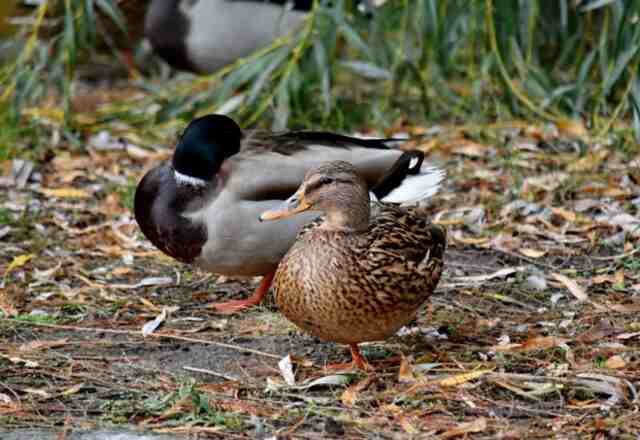Do Ducks Have Tongues? It’s a quacky question that has left many pondering the peculiarities of our feathered friends. Well, here’s the scoop: ducks do have tongues, but they’re not quite like ours.
Curious to learn more about these web-footed wonders and their unique oral appendages? Dive into this article to discover the surprising truth and unravel the mysteries of duck tongues!
Table of Contents
- 1 The Anatomy of a Duck’s Mouth
- 2 The Function of a Tongue
- 3 The Purpose of a Tongue in Humans vs. Ducks
- 4 The Evolution of Duck Tongues
- 5 The Different Types of Duck Species
- 6 Do All Duck Species Have Tongues?
- 7 The Size and Shape of Duck Tongues
- 8 The Texture of a Duck’s Tongue
- 9 How Ducks Use Their Tongues for Feeding
- 10 The Role of Tongues in Communication
- 11 Diseases and Disorders That Affect Duck Tongues
- 12 Fun Facts About Duck Tongues
- 13 Frequently Asked Questions
- 14 Conclusion
- 15 Author
The Anatomy of a Duck’s Mouth
Take a closer look at a duck’s mouth, and you might be surprised by what you see – there’s more to it than meets the eye! The oral cavity of ducks is quite complex and is designed to help them in their everyday activities.
When it comes to the anatomy of a duck’s mouth, the tongue is an important part of it. Ducks do have tongues, but they’re not like the tongues of humans or other animals.
The duck tongue anatomy is quite different, as it’s flat and wide, and it has a rough texture that helps the duck grip its food.
It’s located at the back of the oral cavity of ducks and is not visible from outside. The duck’s beak structure is designed in such a way that the tongue can move around and help the duck swallow its food.
Aside from the tongue, there are other interesting parts of the oral cavity of ducks. For example, the inside of a duck’s beak is lined with small teeth-like structures called lamellae.
These help the duck to filter food particles from the water and retain the ones that are nutritious. The beak is also used for preening, cleaning, and grooming feathers, which is essential for a duck’s survival in the wild.
In summary, the anatomy of a duck’s mouth is fascinating and has a lot of interesting features. From the duck tongue anatomy to the beak structure and lamellae, every part has a unique function that helps the duck survive in its environment.
So, the next time you see a duck, take a closer look at its mouth and appreciate the complexity of its design.
| Anatomy | Description |
|---|---|
| Beak | Made of two parts, the upper and lower mandible |
| Nostrils | Located at the base of the beak |
| Tongue | Muscular organ located in the oral cavity |
| Salivary glands | Produce saliva to aid in digestion |
| Esophagus | Muscular tube connecting the mouth to the stomach |
| Crop | An enlarged part of the esophagus where food can be stored before digestion |
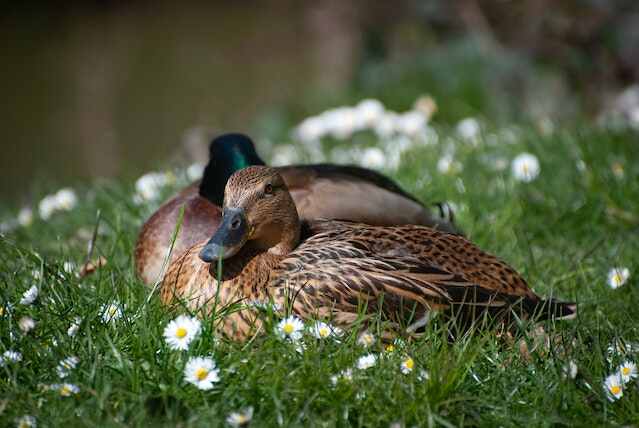
The Function of a Tongue
It’s a shame that we can’t all enjoy the luxury of a versatile tongue like humans, who can use it for everything from speech to tasting the complexities of a fine wine.
However, when it comes to ducks, their tongues serve a different purpose. While ducks do have tongues, they are not as versatile as ours.
In fact, the anatomy of a duck’s mouth is quite different from ours, and their tongues play a different role in their oral cavity.
The importance of tongues in ducks lies in their ability to help them swallow their food. Unlike humans, who use their tongues to manipulate food and taste it, ducks use their tongues to scoop up their food and push it down their throats.
This is why their tongues are flat and broad, and not as muscular as ours. Moreover, the oral cavity of ducks is designed to filter out water and keep food from escaping, which is crucial for their survival in the wild.
So, while ducks do have tongues, they are not as versatile as ours. Their tongues play an important role in helping them swallow their food, but they are not used for tasting or speech.
Nevertheless, the anatomy of a duck’s mouth is fascinating, and it’s amazing to see how different species have adapted to survive in their respective environments.
| Function | Description |
|---|---|
| Taste | Detects the flavors of food |
| Manipulation | Moves and positions food in the mouth |
| Swallowing | Pushes food toward the esophagus |
| Vocalization | Helps produce some bird sounds |
The Purpose of a Tongue in Humans vs. Ducks
As you compare the purpose of a tongue in humans versus that of a duck, you’ll notice that while humans use their tongues for speech and tasting, ducks rely on their flat and broad tongues to scoop up and swallow their food.
Duck tongue anatomy is quite different from human tongue anatomy. Unlike humans, ducks have a tongue that is flat and wide, with a rough surface that helps them grip and manipulate their food. The importance of tongues in ducks cannot be overstated.
Ducks do not have teeth, so their tongues are essential for breaking down food before it reaches their stomachs.
A duck’s tongue is also responsible for moving food to the back of their mouth, where it can be swallowed safely.
In addition, duck tongues are covered in keratin, a tough and durable protein that helps protect them from damage.
Overall, the tongue function in birds, including ducks, is quite different from that of humans. While humans use their tongues for speech and tasting, ducks rely on their tongues for survival.
Without their unique, flat, and broad tongues, ducks would be unable to eat, and their survival would be in jeopardy.
As such, the importance of the tongue in ducks cannot be understated, and it is a crucial part of their anatomy that allows them to thrive in their natural habitats.
| Comparison | Human Tongue | Duck Tongue |
|---|---|---|
| Primary function | Taste and speech | Manipulation and swallowing |
| Taste buds | On the tongue’s surface | In the mouth and throat |
| Size | Smaller | Larger |
| Mobility | Highly mobile | Limited mobility |
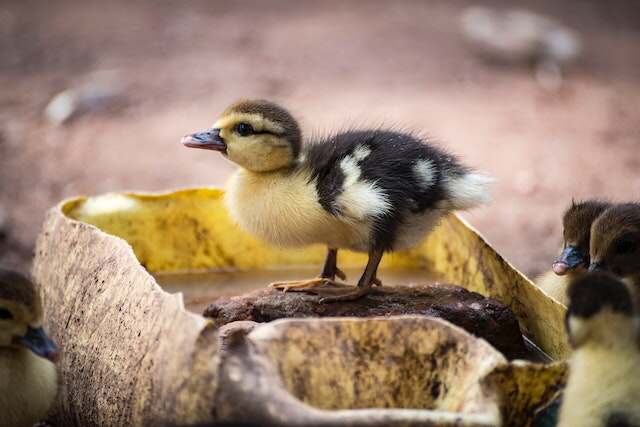
The Evolution of Duck Tongues
You may be surprised to learn that the evolution of duck tongues is quite unique, with some research suggesting that the ancestor of modern ducks had a tongue covered in teeth-like structures called denticles.
The tongue anatomy of a duck has evolved over time, with the modern duck possessing a relatively smooth tongue. However, this smoothness is not indicative of its importance to the duck’s survival.
In fact, the tongue is a vital tool for ducks in their everyday lives. It helps them sift through mud and underwater vegetation to find food, as well as aiding in swallowing and digestion.
Additionally, ducks use their tongues to help preen their feathers, keeping themselves clean and free of parasites.
Without their tongues, ducks would struggle to survive in their natural habitats. Overall, the evolution of duck tongues is an interesting and important topic in the study of animal anatomy.
While modern ducks may not have the same tongue structure as their ancestors, their tongues are still an essential part of their survival.
So, the next time you see a duck swimming in a pond, take a moment to appreciate the complexity and importance of its tongue.
| Era | Description |
|---|---|
| Early evolution | Duck ancestors had teeth |
| Late Cretaceous | Beaks evolved as teeth disappeared |
| Post-Cretaceous | Tongue evolution began |
| Modern ducks | Tongues adapted to different feeding habits |
The Different Types of Duck Species
Did you know that there are over 100 different types of duck species, each with their own unique characteristics and adaptations to survive in their environments?
These species come in all shapes and sizes, from the small and agile Bufflehead to the large and colorful Mandarin duck.
One of the most fascinating aspects of these creatures is their tongues. The anatomy of a duck tongue is quite unique, and comparing it to other bird species can give us insight into the evolution of this important organ.
Here are some key differences in duck tongue anatomy:
- Unlike most birds, ducks have a tongue that’s covered in small, hair-like projections called filiform papillae.
- Some species of ducks, such as the American Black Duck, have a tongue that’s longer than their beak.
- The tongue of a duck is often used to filter food out of the water, and is equipped with small barbs that help trap small particles.
- In comparison to other bird species, the duck tongue is relatively large and muscular, allowing for greater control and precision when feeding.
It’s fascinating to think about how the evolution of duck tongues has helped these birds adapt to their environments over time.
Some species, like the Merganser, have developed specialized beaks and tongues that allow them to catch and eat fish underwater.
Others, like the Mallard, have shorter tongues that are better suited for grazing on land.
By studying the different types of duck species and their unique adaptations, we can gain a deeper understanding of how these birds have evolved to survive in a constantly changing world.
| Species | Tongue Size and Shape |
|---|---|
| Mallard | Broad, flat tongue with papillae |
| Muscovy | Narrow, pointed tongue with a smooth surface |
| Mandarin | Short, broad tongue with a smooth surface |
| Wood Duck | Narrow, pointed tongue with papillae |
| Pekin | Broad, flat tongue with a smooth surface |
Do All Duck Species Have Tongues?
It’s a common misconception that all duck species lack tongues, but in reality, these birds have some of the most unique and fascinating tongues in the avian world.
The duck tongue anatomy is quite different from that of other birds. While most birds have a tongue that is attached to the hyoid bone, the duck’s tongue is free-floating and can be moved independently.
This tongue is also covered in small, hair-like projections called papillae, which help the duck grip and hold onto food.
Duck feeding behavior is also heavily influenced by their unique tongue anatomy. As ducks are primarily waterfowl, they feed on a diet of aquatic plants and animals.
To get the most out of their food, ducks will use their tongues to filter out water and extract nutrients from their meals.
This means that their tongues are not only used for taste, but also for the mechanical processing of food. In summary, while it is often thought that ducks lack tongues, this couldn’t be further from the truth.
These birds have some of the most fascinating tongue anatomy in the avian world, which plays a crucial role in their feeding behavior.
So the next time you see a duck, take a closer look and appreciate the wonders of duck anatomy, including their unique and fascinating tongues.
| Duck Species | Tongue Present? |
|---|---|
| Mallard | Yes |
| Pekin | Yes |
| Muscovy | Yes |
| Rouen | Yes |
| Khaki Campbell | Yes |
| Indian Runner | Yes |
| Swedish Blue | Yes |
| Cayuga | Yes |
| Buff | Yes |
| Welsh Harlequin | Yes |
The Size and Shape of Duck Tongues
If you’re curious about whether all duck species have tongues, we’ve already talked about that. But have you ever wondered about the size and shape of duck tongues?
Let’s delve into duck tongue anatomy and find out.
Duck tongues are not like human tongues. They have a much flatter and broader shape, and they lack the muscular flexibility that our tongues have. Instead, they’re covered in tiny, bristle-like structures called papillae, which help the duck grip its food.
The papillae make duck tongues look a bit rough, but they’re not harmful to touch.
The size and shape of a duck’s tongue can vary depending on the species. Some ducks, like the Shoveler, have very long and narrow tongues that they use to filter food from the water.
Other ducks, like the Mallard, have tongues that are shorter and wider, which they use to scoop up food from the ground.
It’s fascinating to see the differences in animal morphology, and duck tongues are just one example of how unique and diverse animals can be.
| Species | Tongue Type | Tongue Length |
|---|---|---|
| Mallard Duck | Flat | 3.5 cm |
| Muscovy Duck | Triangular | 4 cm |
| Wood Duck | Flat | 3 cm |
| Pekin Duck | Triangular | 4.5 cm |
| Rouen Duck | Flat | 3.5 cm |
| Mandarin Duck | Pointed | 2.5 cm |
| Khaki Campbell | Triangular | 4 cm |
Note: These measurements are approximate and may vary based on individual variations within the species.
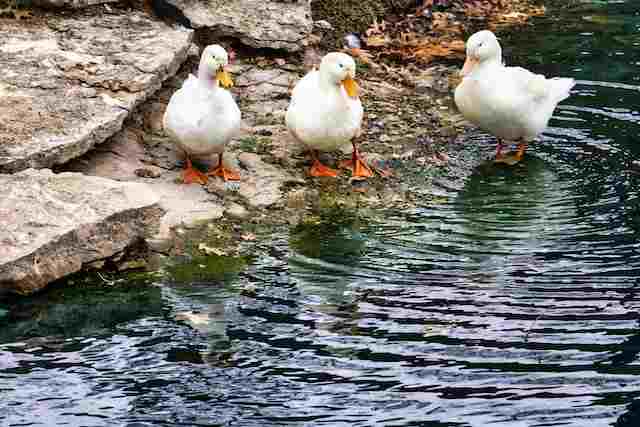
The Texture of a Duck’s Tongue
You may be surprised to know that when you pet a duck’s tongue, you’ll feel tiny bristle-like structures that help the duck grip its food.
These structures are called papillae, and they cover the surface of the tongue. The papillae are made of keratin, the same material that makes up human hair and nails.
Here are some interesting facts about duck tongue anatomy:
- Duck tongues are covered in papillae, which give them a rough texture.
- The papillae on a duck’s tongue are longer and more numerous than those on a chicken’s tongue.
- Unlike most birds, ducks have a tongue that is flat and wide, which helps them scoop up food from the water.
- The tongue of a duck is not very flexible, which means that they cannot manipulate their food as well as other birds can.
- When comparing duck tongues to other bird species, it’s interesting to note that some birds, like woodpeckers, have barbed tongues that help them catch insects.
So, are duck tongues rough? Yes, they are! The papillae on a duck’s tongue give it a rough texture that helps the duck grip its food.
While the texture may feel strange to us, it’s an important adaptation that helps ducks survive in their natural habitat.
Next time you see a duck, take a closer look at its tongue and appreciate the unique anatomy that makes these birds so fascinating.
| Species | Texture of Tongue |
|---|---|
| Mallard | Rough |
| Muscovy | Smooth |
| Pekin | Smooth |
| Mandarin | Smooth |
How Ducks Use Their Tongues for Feeding
Get ready to be amazed as we explore how a duck utilizes its tongue to feed itself! The anatomy of a duck’s tongue is fascinating.
Unlike humans, ducks have a flat and broad tongue that is covered in tiny bristles called papillae. These papillae help the duck grasp its food and keep it from slipping away.
The tongue is also highly mobile, allowing the duck to move it around inside its bill to manipulate food. Duck feeding behavior is closely tied to the anatomy of their tongues.
They are omnivorous and feed on a variety of foods such as insects, crustaceans, and plants. When feeding on small prey like insects, ducks use their tongues to scoop up the prey and swallow it whole.
For larger prey or plants, ducks use their beaks to grasp the food and their tongues to move the food around inside their bills to break it down before swallowing.
The digestive system of ducks is also unique. The food they eat is first stored in the crop, which acts as a temporary food storage organ.
From there, the food is passed to the proventriculus, where digestive enzymes are added. Finally, the food is passed to the gizzard, a muscular organ that grinds the food into smaller pieces.
The food then passes through the intestines, where nutrients are absorbed and waste is eliminated. All of this is possible due to the complex anatomy of a duck’s tongue and digestive system.
| Feeding Behavior | Description |
|---|---|
| Dabbling | Use tongues to filter food and water |
| Diving | Tongues used to catch and manipulate prey |
| Grazing | Tongues used to rip and tear plant matter |
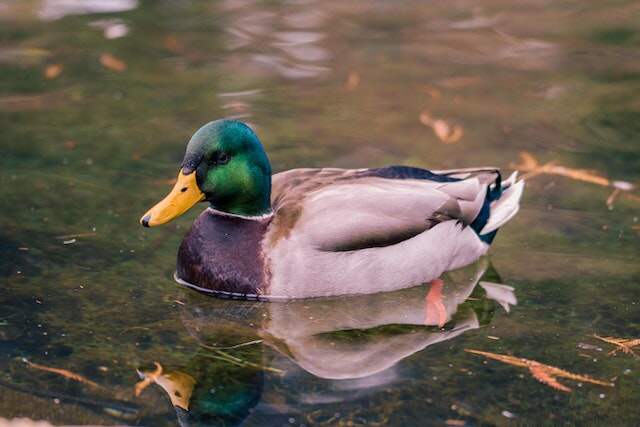
The Role of Tongues in Communication
As you may have guessed, there’s more to a duck’s tongue than just feeding – let’s dive into how they use it for communication.
In terms of anatomy, duck tongues are quite unique because they lack the muscles that humans have. Instead, they have a fleshy, fringed appendage that helps them filter out food from water.
However, this fringed tongue also plays a crucial role in vocalizations. Duck feeding behavior is closely tied to their vocalizations.
When ducks are foraging for food, they’ll often make soft quacking noises to communicate with each other.
Additionally, when a duck finds food, it may make a loud, high-pitched call to alert others in the flock. Interestingly, ducks also use their tongues to create different sounds.
For instance, when a male duck is trying to attract a mate, he’ll make a whistling sound that’s created by air passing over his tongue.
Overall, duck tongues play a crucial role in communication for these birds.
Whether they’re using their fringed tongues to filter out food or creating unique sounds to communicate with others, these appendages are an essential part of their anatomy.
Next time you see a duck, take a moment to appreciate the complexity of their communication methods and the role that their tongues play in this process.
| Communication | Description |
|---|---|
| Mating calls | Tongues used to produce specific vocalizations |
| Aggression | Tongue flicking can be a sign of aggression |
Diseases and Disorders That Affect Duck Tongues
It’s heartbreaking to learn that diseases and disorders can cause significant harm to the communication abilities of these amazing creatures, as their tongues are an essential part of their vocalizations and feeding behavior.
The anatomy of a duck’s tongue is quite remarkable, as it isn’t just a simple muscle as found in other animals. It has tiny hair-like projections on the surface, which help to filter out water and mud when they’re feeding in shallow water.
However, diseases such as duck viral enteritis and duck plague can damage these structures, making it difficult for them to eat and communicate.
Can ducks eat without a tongue? The answer is yes. Although the tongue plays a vital role in the feeding habits of ducks, they have other mechanisms that can compensate for its absence.
For instance, they use their bills to filter out water and mud, and their esophagus has small projections that can help to push the food down.
However, the loss of the tongue can significantly affect their feeding efficiency, making them more vulnerable to starvation and other health problems.
Duck tongue diseases and disorders can have a devastating impact on their overall health and wellbeing.
Besides affecting their feeding and communication abilities, these conditions can lead to other complications such as respiratory distress and dehydration.
Therefore, it’s essential to provide proper care and treatment to these birds to ensure they live a healthy and happy life.
| Condition | Symptoms |
|---|---|
| Candidiasis | White, creamy patches on tongue |
| Fowlpox | Lesions on tongue and oral cavity |
| Avian influenza | Tongue ulcers and lesions |
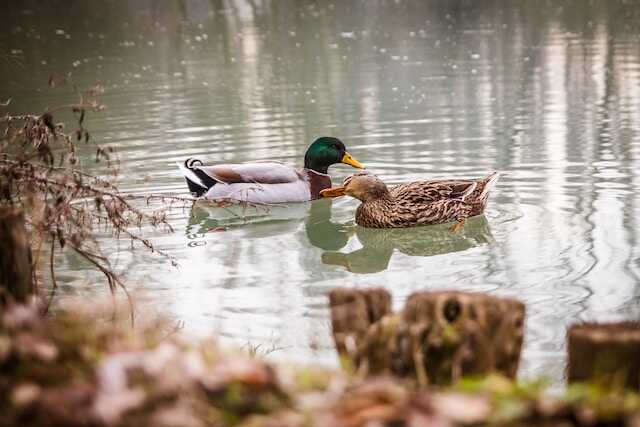
Fun Facts About Duck Tongues
You’ll be surprised to learn that duck tongues have tiny hair-like projections that help them filter out water and mud, making them one of the most fascinating parts of these amazing creatures!
Duck tongue anatomy is truly unique. In addition to their hair-like projections, they also have a fleshy, round base that helps them grip food and move it towards their digestive system.
Did you know that ducks can eat without a tongue? While their tongues do play a role in helping them swallow and taste, they can still consume food even if their tongue is injured or missing.
This is because their esophagus has strong muscles that can work together to push food down into their stomach.
Nevertheless, the tongue is still an important part of a duck’s anatomy and helps them to thrive in their natural environments.
If you’ve ever touched a duck tongue, you may have noticed that it feels rough. This is because their tongues are covered in keratin, the same protein that makes up our hair and nails.
The keratin helps to protect the tongue from damage while the duck is foraging for food. So next time you see a duck, take a moment to appreciate their incredible tongue and all the amazing things it can do!
| Fact | Description |
|---|---|
| Taste buds | Ducks have fewer taste buds than humans |
| Long tongue | The wood duck has a tongue that extends up to 1.5 inches beyond its beak |
| Drinking | Ducks use their tongues to create a vacuum to suck up water |
Frequently Asked Questions
What do ducks use their tongues for besides feeding?
If you’re curious about what ducks use their tongues for besides feeding, you might be surprised to learn that ducks don’t actually use their tongues to manipulate or chew food like humans do.
Instead, their tongues are primarily used for grooming and preening their feathers.
The tongue is covered in small, hair-like projections called papillae, which help to clean and spread oil throughout the feathers, keeping them waterproof and insulated.
Additionally, ducks may also use their tongues to help them drink water by creating a suction-like action to draw water into their bills.
So while they may not be as essential to feeding as they are in humans, duck tongues still serve important purposes in their daily lives.
How do duck tongues differ from other bird tongues?
Did you know that duck tongues are unique compared to those of other birds? Unlike most avian species, ducks’ tongues are covered in tiny bristles called papillae, which help them grasp and manipulate food in the water.
These papillae also make their tongues rough to the touch, providing a strong grip on slippery prey like fish and snails.
In fact, some ducks have even evolved specialized tongues to fit their specific diets, such as the long, narrow tongue of the pintail duck, which allows it to reach deep into narrow crevices for food.
It’s fascinating to think about how even small features like a duck’s tongue can have such a significant impact on their survival and adaptation.
What is the lifespan of a duck tongue?
If you’re curious about the lifespan of a duck tongue, you may be surprised to know that it varies depending on the species of duck.
In general, ducks have relatively short lifespans compared to other birds, with some species living only a few years in the wild.
However, research on the specific lifespan of duck tongues is limited, and it’s unclear whether there are significant differences between species.
Factors such as diet, habitat, and genetics may also play a role in the lifespan of a duck’s tongue.
Overall, more research is needed to fully understand the lifespan of duck tongues and how it relates to the overall health and longevity of these fascinating birds.
Do ducks have taste buds on their tongues?
Imagine taking a bite of your favorite food, but not being able to taste it. That’s what life would be like for ducks if they didn’t have taste buds on their tongues.
Luckily for these feathered friends, they do have taste buds, and plenty of them! In fact, ducks have over a thousand taste buds on their tongues, allowing them to fully enjoy the flavors of their food.
So the next time you see a duck waddling about, take comfort in knowing they can savor their meals just like you do.
Can ducks choke on their food due to the structure of their tongues?
Worried about whether your ducks can choke on their food due to the structure of their tongues?
The good news is, ducks have a unique tongue structure that prevents them from choking on their food. Unlike humans, who use their tongue to move food towards the back of their throat, ducks use their tongue to scoop up food and push it towards the back of their mouth.
This means that their food is broken down before it reaches the back of their throat, reducing the risk of choking.
So sit back and relax, your feathered friends are safe from choking hazards.
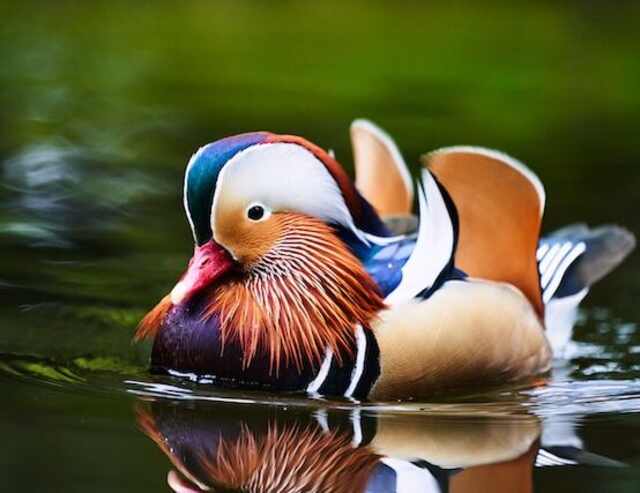
Conclusion
So, now you know the answer to the burning question: do ducks have tongues? The answer is yes!
While their tongues may not look or function like ours, they play a vital role in a duck’s feeding and communication. These unique features have evolved over time to suit the needs of different duck species and their habitats.
Next time you see a duck in the park or pond, take a closer look at its mouth and see if you can spot its tongue.
It’s just one of the many fascinating aspects of these waterfowl creatures that make them so interesting to study and admire.
So, go ahead and quack with excitement because you’re now a duck tongue expert!


